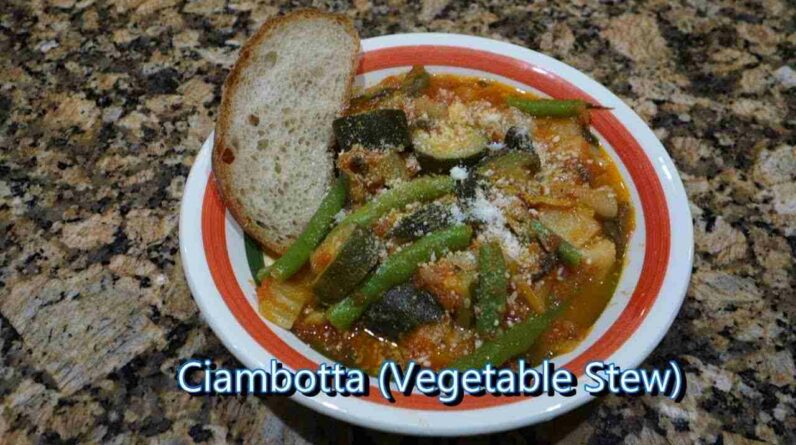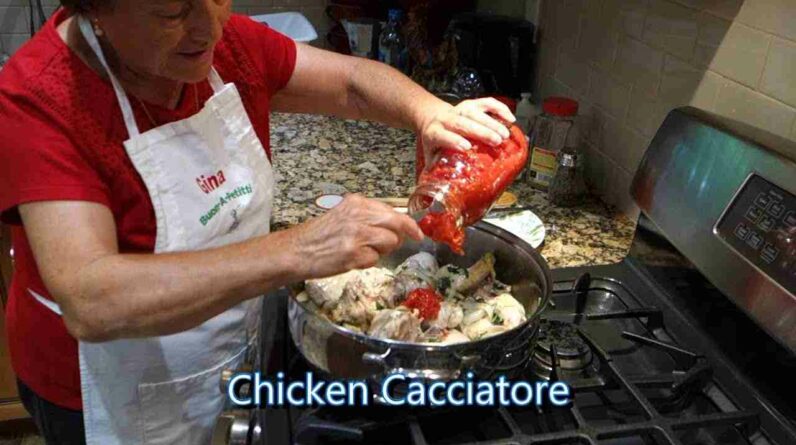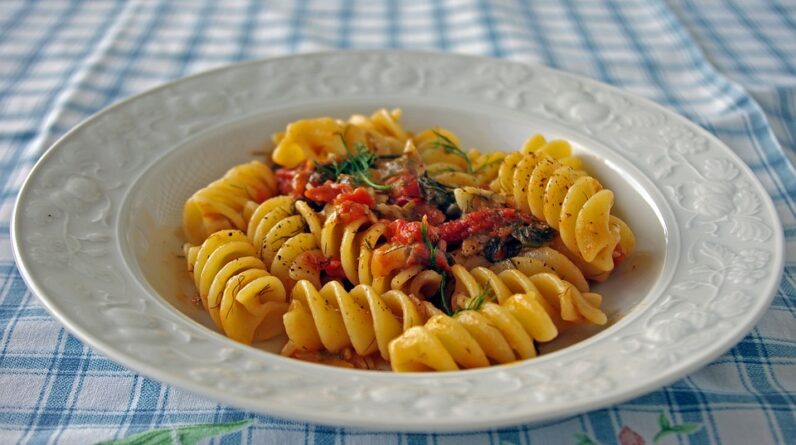Imagine strolling down the sun-drenched paths of Southern Italy, the air is thick with the zesty aroma of lemon groves spreading as far as the eye can see. It’s here, amidst the verdant hills and rugged cliffs, where the story of Limoncello unfolds—a tale as enchanting as the drink itself.
The origins of this zingy, sweet concoction are steeped in history and lore. Legend has it that the recipe for this golden elixir dates back a few centuries. Think lush Amalfi coastline, picture-perfect Capri, or the serene island of Sicily—each claims to be the birthplace of Limoncello. Households across the regions would infuse pure alcohol with the peels of ripe, local lemons, creating a digestive to be sipped after a hearty meal, whispering of warmth and hospitality straight from the Italian heart.
Limoncello’s roots can be traced to hardworking fishermen and farmers who purportedly drank this homemade spirit in the early dawn to ward off the chill and brace themselves for a long day ahead. Yet, another twist to the tale suggests that the nuns and monks had their hand in perfecting this citrusy concoil, weaving the threads of tradition with every bottle they crafted in silent monasteries.
With each family secret and guarded recipe, the tradition of making Limoncello was passed down through generations, becoming a symbol of the Italian dolce vita. It’s a tradition that reflects the Italian mastery of turning simple, fresh ingredients into something truly sublime.
If life gives you lemons, make Limoncello! Or so the saying should go in Italia.
There’s something truly magical about this lemony liquor, it’s more than just a drink—it’s a snippet of Italian culture, served chilled in a small, frosted glass. That first sip, a vibrant citrus burst followed by a sweet, smooth finish, always brings a glow to the moment. It’s a sip of sunshine, a toast to the endearing charm of Italian hospitality, and a tribute to the generations that imbued this liqueur with its soulful essence.
- Highlight of Italian summers – sip it under the lemon trees or by the azure sea.
- Perfect ending to an Italian feast – a palate cleanser, a digestivo, a liquid celebration.
- A gesture of welcome – sharing homemade Limoncello with guests is sharing a piece of your Italian home.
In Italy, some things are eternal—the ruins, the art, the beauty, and, certainly, Limoncello. So, next time you enjoy that tangy wave of limoncello, remember it’s not just a drink—it’s an Italian story in your glass. Saluti!
Variations of citrus liqueurs in Italy
Now, if you’re charmed by the golden allure of Limoncello, just wait until you hear about its citrusy siblings that grace the Italian palette! All across Italy, families and artisans have been perfecting their own versions of citrus-based liqueurs, each with its own regional signature. The key? It’s all in the zest!
Riding north from the lemon-scented coastline, you’ll find Limoncino. Similar to its southern counterpart but with a whisper of regional distinction, it’s another lemony gem that’s delightful on the tongue. Then there’s Arancello, a vibrant concoction made from the peels of sun-kissed oranges, often found in the sunny groves of Sicily. It’s like capturing a sunset in a bottle – bittersweet and utterly intoxicating. Don’t forget to try Bergamotto, made from the zest of Bergamot oranges, this libation has an earl grey tea essence that’s sophisticated and a tad more genteel than its zesty cousins.
Travel even further, and you’ll discover Mandarinetto, a delightful tipple that features the allure of mandarins. While Limoncello celebrates the lemon’s zing, Mandarinetto is like a softer embrace—sweet, floral, and just the right amount of tartness. It’s a cozy drink that feels like a hug from an Italian nonna.
And here’s a fun twist: The Italian love affair with citrus isn’t limited to the ripe fruits. Have you ever tried Cedro? Made from citrons, those gargantuan, funky-looking lemons, Cedro is an elixir that mingles mystery with a bold citrus punch. It’s a narrative of taste, telling stories of the Jewish community in Calabria who cultivated this larger-than-life fruit.
Each of these liqueurs captures the essence of the Italian regions, reflecting the diversity of the landscape and the ingenuity of its people. They’re part of the banquet of Italian flavors, versatile enough to be savored neat, drizzled over desserts, or mixed into cocktails that dance to the rhythm of la dolce vita.
- For a cheeky aperitivo, why not mix Arancello with a splash of prosecco?
- Drizzle a bit of Limoncino on a sorbet for a delectable dessert that sings Italia.
- End your meal with a chilled glass of Mandarinetto, and feel the soft embrace of Italian sweetness.
Indeed, Italy’s love affair with citrus liqueurs is as deep and varied as its history, cuisine, and culture. Though each region spins its own yarn with their unique variations, they all share the ritual of slow enjoyment, the art of hospitality, and the celebration of local produce. When you indulge in any of these Italian nectars, you’re not just sipping a drink, you’re partaking in an age-old tradition that’s as colorful and spirited as Italy itself. So, raise your glass—here’s to Italian ingenuity and the vibrant family of citrus liqueurs that make life a little sweeter, one sip at a time. Cin cin!
Traditional production methods
Delving into the realm of the classic Italian Limoncello, there’s a particular alchemy that commands attention—the traditional production methods. The process is a sacred ritual, rooted deeply in the Italian insistence on doing things il modo giusto, the right way. It starts with the finest lemons, preferably harvested from the sun-kissed groves of Southern Italy where lemons aren’t just fruits; they are heritage, bursting with the Mediterranean sun and soil.
Picking the lemons is an art in itself, done when they are ripe with essential oils to ensure the richest flavor. Now, here’s where the classic Italian nonchalance steps aside for precision: only the zest is used, with utmost care taken to avoid the bitter white pith. This zest is then steeped in the purest of spirits, many families still swearing by the traditional alcohol, grappa. This maceration, often done in large ceramic or glass containers, is no rush job. It varies from home to home—some insisting on forty days, others on a mystical eighty days—each duration steeped in the lore of family tradition.
What follows is the marriage of this vibrant infusion with a simple syrup. The ratio, of course, is a closely guarded family secret, different in every kitchen, passed down like a precious heirloom. Stirred gently and then left to rest, the blend welcomes its final transformation to that recognizable Limoncello that has conquered hearts far beyond the Amalfi coast.
Served out of a freezer, Limoncello is a golden, viscous liquid that clings to the frosted glass just long enough to promise a respite from the heat of the day. Family gatherings often close with these chilled glasses making their rounds, the laughter and stories flowing as easily as the Limoncello itself.
- Always best homemade—each batch of Limoncello holds a story, a piece of heritage.
- Generational secrets—whether it’s the choice of lemons or the time of infusion, these details make all the difference.
- The purity of ingredients—quality lemons and alcohol translate to the most divine Limoncello.
While the process might sound simple, the craft of creating the perfect Limoncello is anything but—it’s an intricate ballet of tradition, patience, and a touch of family magic. Sure, you could pick up a mass-produced bottle from the store, but why settle when you can savor an Italian tradition handed down through the whispers of time? The next time you’re served a glass of Limoncello, remember it’s more than just a liqueur—it’s a testament to the Italian flair for transforming the simplest of things into pure liquid joy.
This, my friends, is Italy in a glass: a sip of old-world charm, a dash of familial finesse, and an enduring legacy of la dolce vita. So, as the Italians say, salute to tradition and the timeless allure of Limoncello, handcrafted with love and a zest for life.
Limoncello’s rise to popularity
The ascension of Limoncello to stardom in the realm of liqueurs isn’t just about the sun-soaked lemons or even the secretive family recipes. It’s a tale of Italian zest for life, of culture carried in clinking glasses, and an understanding that good food and drink are to be shared. But how did this simple lemon-infused delight climb its way to becoming Italy’s liquid ambassador to the world?
Postcards from Sorrento and charming tales whispered amongst food lovers began to carry the legend of Limoncello beyond the domestic hearth. As tourism flourished, visitors to Italy’s picturesque lemon groves would return home, their suitcases perfumed with memories and filled with handcrafted bottles of this lemony spirit. The souvenir hence became a token of sun-drenched escapades, and the word of Limoncello’s refreshing charm spread far and wide.
The turn of the century saw Limoncello shining brighter on the global stage. Trendsetters and mixologists, ever in search of novel experiences, embraced its versatility. From the shimmering coast of Capri to the cocktail bars of New York, Limoncello found itself both a chilled digestif and a vivacious ingredient in avant-garde mixology. It wasn’t long before it secured its place on the menu of discerning establishments, a testament to its adaptability and universal appeal.
Savvy restaurateurs and charismatic bar owners have long since realized that a drink this vivacious deserves a spot backlit on their shelves—a beacon to those craving a taste of Italy.
Marketing mavens might tell you that Limoncello’s rise was due to strategic branding, that its label as “Italy in a bottle” was carefully curated. But ask any Italian nonna, and she’ll laugh, explaining that no campaign could capture the essence of this aromatic nip; people loved it simply because it is the spirit of hospitality, the essence of a generous land, bottled and shared.
- A star in culinary circles – drizzle it on gelato for a citrusy zing or include it in a decadent dessert sauce.
- Must-have at festivities – in Italy, no celebration is complete without a toast of frosted Limoncello glasses.
- Synonymous with joy – in Italy, to offer Limoncello is to offer a moment of happiness.
The narrative of Limoncello is now interwoven with Italy’s culinary identity and is as much a slice of Italian life as pizza or pasta. The liqueur embodies the sunlit glamour of the south, the ease of Italian leisure, and the penchant for pleasure in all its forms. It whispers tales of lemon groves to anyone willing to listen, proving that, sometimes, fame is just a byproduct of being genuinely loved.
Tourists may come and go, recipes may alter, but one truth remains constant: Limoncello is adored because it’s more than just a drink—it’s liquid sunshine, captured in the embrace of tradition and sipped in the spirit of Italy’s endless summer. So next time that glass of Limoncello clinks, take a moment to relish not just a trend, but a timeless treasure that Italy has graciously let the whole world savor.
Modern Limoncello-making and its global reach
As we leap into the modern era, the craft of Limoncello-making is not confined solely to the lemon-laden landscapes of Italy. The traditional Italian spirit has gracefully pirouetted onto the global stage, shimmying its way into hearts—and bars—worldwide. With the rise of artisanal food culture and global gastronomy, this fragrant liqueur has found new forms and followers, far beyond its Italian roots.
The modern palette of Limoncello-making is as adventurous and inventive as it is respectful of its history. In an era where the world is in constant dialogue, Italian producers have married time-honored traditions with innovation to satisfy a growing demand for authenticity combined with contemporary flair. Distillers are experimenting with organic lemons, in-house cultivations, and even sustainable practices to reduce waste and preserve the pristine environments that give us those lemons so essential to Limoncello’s character.
Moreover, the advent of craft cocktails has breathed new life into Limoncello’s application. No longer solely a digestivo, it’s become a trendy choice for mixologists weaving tales of citrus and spirit across their bars. In the hands of these modern-day alchemists, Limoncello is remixed into cocktails that dazzle, with names as colorful as the drink itself. It’s a muse for concoctions like the “Lemon Sparkler” or the “Italian Mule,” proving that good old Limoncello can swing with the new trends.
Digital reach has amplified Limoncello’s voice—glowing among Instagram feeds and Pinterest boards, it beckons those in search of authentic experiences. It’s not just a liqueur; it’s a hashtag, a lifestyle choice, an aesthetic.
The global reach of Limoncello has also encouraged a curious audience to try their hand at crafting homemade versions. The internet abounds with DIY recipes, challenging enthusiastic cooks to infuse their own spirited interpretation. Though lacking the Mediterranean sun, these homemade brews carry the spirit of Limoncello across snow-capped mountains and through cityscapes, each bottle a small ambassador of Italy’s liquid gold.
- Homemade versions – adventurous spirits are creating Limoncello in their kitchens, experimenting with lemon varieties from their local regions.
- Cocktail innovation – Limoncello’s versatility makes it a favorite among cocktail enthusiasts and professionals alike.
- The gift of Italy – bottled and branded, Limoncello is gifted as a sip of Italy’s culinary magnificence, wrapped in the warmth of its history.
Indeed, as Italian culture prides itself on hospitality and sharing, so too has Limoncello found its way into the hearts of those near and far. It signifies not just a drink but an invitation—an allure to gather, to celebrate, and to partake in the ageless joy of connection that is so quintessentially Italian.
In this global embrace, Limoncello shines not because it’s trendy but because it carries within it a story of place, people, and the simple pleasure of life. Images of clinking glasses brimming with bright yellow liqueur, shared by smiling friends against backdrops from Brooklyn to Bali, are a testament to its universal appeal. This isn’t just modern Limoncello-making; this is a journey of culture without borders, of traditional roots spreading to create a global canopy of Italian-inspired delight.
The world may be ever-changing, but some things remain cherished. Limoncello, with its radiant hue, enduring charm and surprisingly adaptable nature, is one such thing—a venerable tradition now shared across continents, inviting one and all to savor a taste of Italy abroad. So, lift your glass of Limoncello, whether you are toasting under the Neapolitan sun, or under the Northern Lights, and revel in the joy of a tradition that knows no borders.








